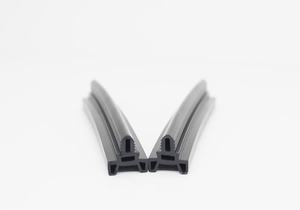








Dilatation seals, also known as expansion joints or expansion seals, are critical components used in construction, infrastructure, and engineering projects to accommodate movement, vibration, and thermal expansion in structures and building elements. These seals provide a flexible and durable solution for bridging gaps between adjacent structural components while maintaining a watertight, airtight, and weatherproof seal. Dilatation seals are widely used in various applications, including bridges, highways, buildings, parking structures, stadiums, and industrial facilities. Here’s a comprehensive overview of dilatation seals:
- Purpose and Function: Dilatation seals are designed to accommodate movement and expansion in structural elements caused by temperature variations, seismic activity, settlement, and structural deflection. They prevent the buildup of stress and pressure within the structure by absorbing movement and allowing for controlled displacement, thereby reducing the risk of damage, cracking, or failure.
- Types of Dilatation Seals:
- Compression Seals: Compression seals consist of a compressible elastomeric core encased in a metal or rubber jacket. They are installed in expansion joints to absorb movement and maintain a watertight seal. Compression seals are available in various configurations, including single-seal, double-seal, and multi-seal systems, to accommodate different movement ranges and structural requirements.
- Modular Seals: Modular seals consist of individual rubber or neoprene modules assembled into a continuous seal. They are used in expansion joints with large movement ranges and irregular shapes, such as bridge decks and highway pavements. Modular seals provide flexibility, durability, and ease of installation, making them suitable for high-traffic and dynamic environments.
- Strip Seals: Strip seals consist of a rubber or neoprene strip installed within a metal housing or track. They are used in expansion joints for bridges, viaducts, and elevated structures to accommodate movement while maintaining a watertight seal. Strip seals offer excellent resistance to heavy loads, shear forces, and dynamic movements, making them ideal for long-span structures and seismic regions.
- Foam Seals: Foam seals consist of closed-cell foam or sponge rubber installed within expansion joints to provide a flexible and compressible seal. They are commonly used in buildings, parking structures, and stadiums to accommodate movement and prevent water infiltration. Foam seals are cost-effective, lightweight, and easy to install, making them suitable for a wide range of applications.
- Belt Seals: Belt seals consist of a flexible rubber or neoprene belt installed within expansion joints to provide a durable and resilient seal. They are used in highways, airport runways, and industrial floors to accommodate movement and traffic loads. Belt seals offer excellent resistance to abrasion, chemicals, and weathering, ensuring long-term performance in demanding environments.
- Material Composition:
- Rubber: Rubber is the most common material used in dilatation seals due to its flexibility, resilience, and durability. EPDM (Ethylene Propylene Diene Monomer) rubber, neoprene, silicone, and natural rubber are commonly used for their excellent weather resistance, chemical resistance, and sealing properties.
- Metal: Metal components such as aluminum, stainless steel, and galvanized steel are used in the construction of dilatation seal housings, tracks, and frames. Metal components provide structural support, stability, and protection against corrosion, ensuring the longevity and reliability of the seal assembly.
- Installation Methods:
- Field-Fabricated Seals: Field-fabricated seals are custom-designed and fabricated on-site to fit specific expansion joint dimensions and structural requirements. They are typically installed by experienced contractors using specialized equipment and techniques to ensure proper alignment, compression, and sealing.
- Preformed Seals: Preformed seals are manufactured off-site and delivered to the construction site as ready-to-install components. They are available in standard sizes and configurations to fit common expansion joint dimensions and specifications. Preformed seals are easy to install and require minimal field adjustment, reducing installation time and labor costs.
- Cast-in-Place Seals: Cast-in-place seals are integrated into the concrete structure during the construction process. They are installed within formwork or between concrete pours to create a continuous and monolithic seal. Cast-in-place seals offer seamless integration, enhanced durability, and reduced maintenance requirements compared to surface-mounted seals.
- Design Considerations:
- Movement Range: The design of dilatation seals must accommodate the expected movement range of the structure due to thermal expansion, seismic activity, and structural deflection. The selection of seal type, size, and configuration is based on the anticipated movement range and structural requirements.
- Load Capacity: Dilatation seals must be capable of withstanding the applied loads, including dead loads, live loads, traffic loads, and seismic loads. The design of seal components such as elastomeric cores, metal housings, and anchorage systems is optimized to ensure adequate load capacity and structural stability.
- Waterproofing: Dilatation seals must provide a watertight seal to prevent water infiltration and protect the underlying structure from moisture damage. The selection of seal materials, seal profiles, and installation methods is critical to ensuring effective waterproofing and long-term durability.
- Durability: Dilatation seals must be designed to withstand environmental factors such as UV radiation, temperature fluctuations, chemical exposure, and mechanical abrasion. The selection of high-quality materials, corrosion-resistant coatings, and robust construction techniques is essential to ensure the durability and longevity of the seal assembly.
- Maintenance and Inspection:
- Regular inspection and maintenance of dilatation seals are essential to ensure their continued performance and longevity.
- Visual inspection should be conducted periodically to check for signs of damage, wear, or deterioration, such as cracks, tears, deformation, or displacement.
- Seal components should be cleaned and lubricated as needed to maintain proper functioning and prevent binding or sticking.
- Any damaged or worn seal components should be promptly repaired or replaced to prevent water infiltration, structural damage, or safety hazards.
In summary, dilatation gaskets are critical components used in construction, infrastructure, and engineering projects to accommodate movement, vibration, and thermal expansion in structures and building elements. With their flexible design, durable construction, and reliable sealing properties, dilatation seals ensure the integrity, longevity, and efficiency of structures while providing a watertight, airtight, and weatherproof seal.
